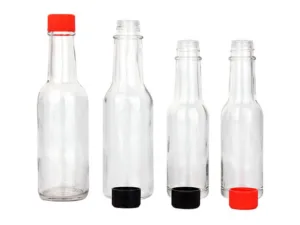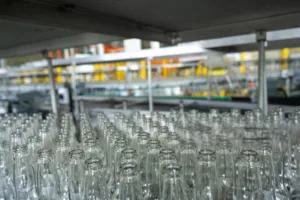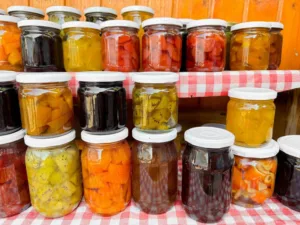Glass Bottles
Glass bottles, as traditional food packaging materials, have always held an important position in the sauce industry. Their unique physical and chemical properties give them significant advantages in terms of food safety and brand image.
•Food-Grade Safety and Purity: Glass is an inert material that does not contain harmful chemicals like Bisphenol A (BPA) and complies with strict FDA and EU food safety standards. It does not react chemically with sauces, ensuring that the original flavor and taste of the sauce remain unaffected, providing consumers with a pure and healthy eating experience.
•Excellent Heat Resistance: Glass bottles can withstand high temperatures, typically allowing for hot filling at 100°C and high-temperature sterilization at 121°C. This is crucial for sauce products that require high-temperature filling or pasteurization, effectively extending product shelf life and ensuring food safety.
•100% Recyclable and Environmentally Friendly: Glass is a material that can be recycled infinitely without losing its quality or purity. This makes glass bottles a highly environmentally friendly packaging choice, helping to reduce waste and carbon footprint, aligning with current consumer demand for sustainable development.
•Premium Visual Presentation: The high transparency of glass bottles clearly showcases the color, texture, and contents of the sauce, offering consumers an intuitive visual delight. This crystal-clear texture gives the product a premium, high-quality image, helping to enhance brand value and market competitiveness.
•Weight and Transportation Costs: Glass bottles are heavier than plastic bottles, which significantly increases transportation costs, especially for long-distance shipping. Higher weight can also lead to higher carbon emissions.
•Fragility and Packaging Requirements: The fragile nature of glass bottles requires stricter shock-proof packaging measures during production, transportation, and sales, which adds extra packaging costs and operational complexity.
Glass bottles are particularly suitable for premium sauces, products requiring hot filling or high-temperature sterilization, and sauces aiming for long-term storage and an excellent brand image. For example, high-quality olive oil, specialty chili sauces, and artisanal jams are all very suitable for glass bottle packaging to highlight their unique value and quality.
Plastic Bottles
Plastic bottles, due to their lightweight and durability, are widely used in many packaging fields, including sauce packaging. However, their limitations in food safety and environmental protection are increasingly drawing attention.
•Lightweight and Transportation Costs: Plastic bottles are significantly lighter than glass bottles, which substantially reduces product transportation costs and energy consumption. For large-volume, long-distance shipping of sauce products, lightweight packaging can bring considerable economic benefits.
•Durability and E-commerce Friendly: Plastic bottles have good impact resistance and are not easily broken, making them very suitable for e-commerce logistics and sales, reducing breakage rates and associated losses.
•Squeeze Design and Convenience: The flexibility of plastic allows it to be molded into various shapes, including convenient squeeze bottle designs for consumers, such as ketchup and salad dressing packaging, enhancing user experience.
•Potential Chemical Leaching: Some plastics (such as PET, labeled “1”; PVC, labeled “3”; PC, labeled “7”) may leach trace amounts of chemicals like Bisphenol A (BPA) or phthalates (DEHP) when exposed to high temperatures or after prolonged storage. Although the leaching levels are usually within safety standards, the potential long-term health risks from chronic exposure remain a concern for consumers, especially in cases of hot filling or when products require high-temperature storage.
•Environmental Impact: Although plastic is recyclable, the global recycling rate for plastic is generally low. For example, only about 9% of plastic is effectively recycled [Source to be added, relevant environmental report data can be cited here]. The degradation cycle of plastic is long, causing long-term environmental pollution and exacerbating the problem of white pollution.
•Transparency and Display Effect: Compared to glass, plastic generally has lower transparency, which may affect the visual presentation of the sauce, making it appear less premium and attractive than products packaged in glass bottles.
Consumer preference for eco-friendly and premium packaging is driving the market towards more sustainable materials. According to market research reports, the glass packaging market experienced significant growth in 2023, with a Compound Annual Growth Rate (CAGR) projected between 4.1% and 5.5%. This indicates that more and more brands and consumers recognize the value of glass packaging in enhancing product image and environmental friendliness.




